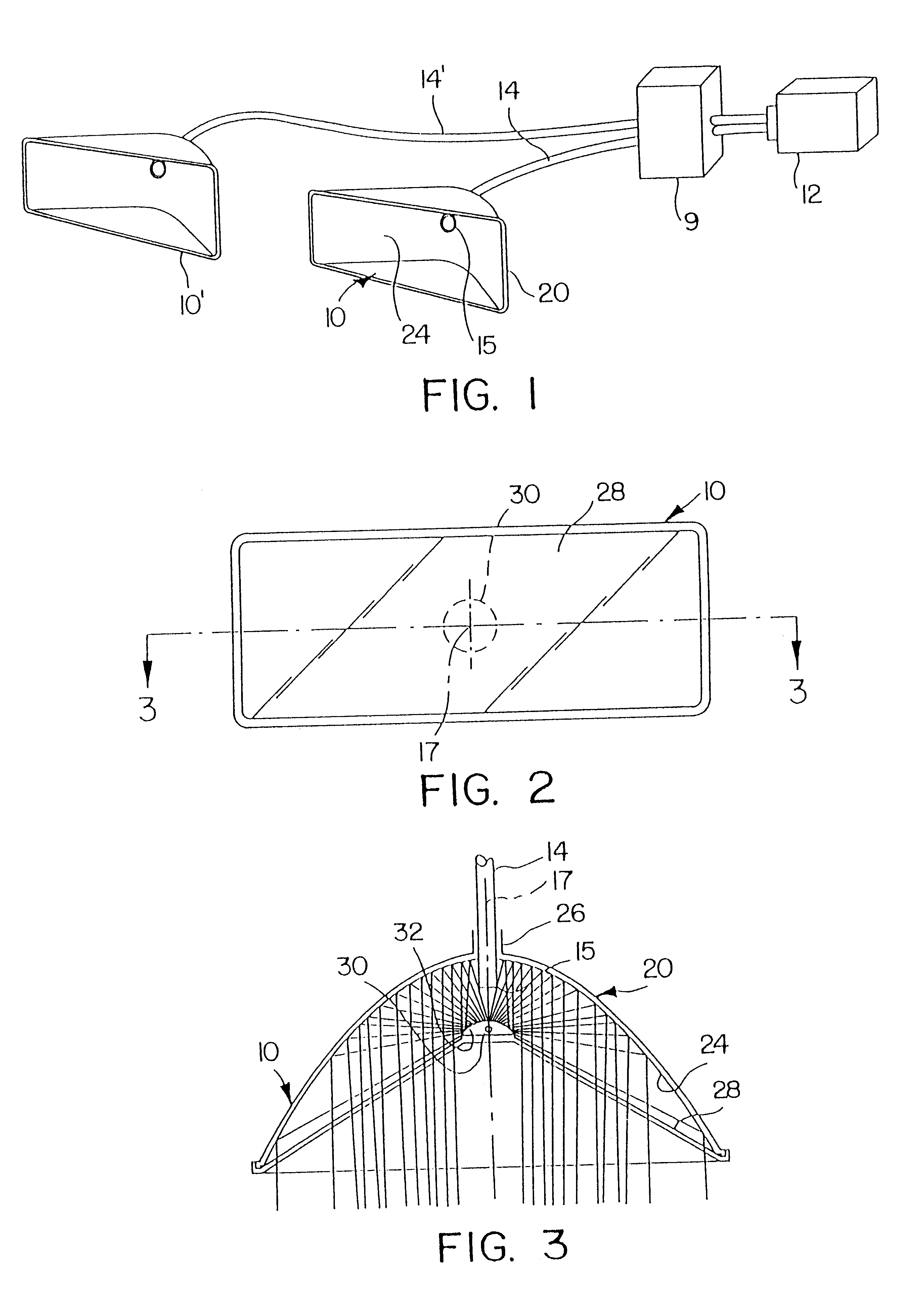Optical coupler and illumination system employing the same
a technology of optical couplers and illumination systems, applied in the direction of optical light guides, bundled fibre light guides, instruments, etc., can solve the problems of inability to achieve widespread use, the area of closely spaced surfaces which will be illuminated by light emitted from light pipes is far too small to permi
- Summary
- Abstract
- Description
- Claims
- Application Information
AI Technical Summary
Benefits of technology
Problems solved by technology
Method used
Image
Examples
Embodiment Construction
FIG. 1 schematically illustrates an illumination system in accordance with the present invention, this system including a pair of projection devices 10 and 10', i.e., a pair of light heads. Referring jointly to FIGS. 1-3, a first embodiment of a light head assembly 10 includes at least an optic deflector 30, a main reflector 20, a support 28 for deflector 30, and means 26 for receiving a light pipe 14. Reflector 20 generally serves as the light head housing and has a reflective surface 24 on one side thereof. In the embodiment of FIGS. 1-3, deflector 30 is in the form of a convex reflector and reflective surface 24 of reflector 20 is concave and symmetric about an axis 17. The light pipe receiving means 26 is integrally formed with reflector 20 such that the discharge end 15 of light pipe 14 is oriented coaxial to axis 17 when light pipe 14 is secured within light pipe receiving means 26.
Support positions 28 deflector 30 at an appropriate distance from, and with an appropriate orien...
PUM
 Login to View More
Login to View More Abstract
Description
Claims
Application Information
 Login to View More
Login to View More - R&D
- Intellectual Property
- Life Sciences
- Materials
- Tech Scout
- Unparalleled Data Quality
- Higher Quality Content
- 60% Fewer Hallucinations
Browse by: Latest US Patents, China's latest patents, Technical Efficacy Thesaurus, Application Domain, Technology Topic, Popular Technical Reports.
© 2025 PatSnap. All rights reserved.Legal|Privacy policy|Modern Slavery Act Transparency Statement|Sitemap|About US| Contact US: help@patsnap.com



